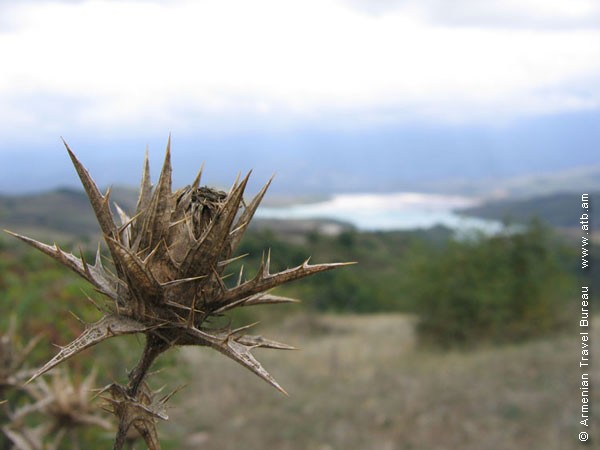Onobrychis takhtajanii: Red Data Book of Armenia

EN B 1 ab (i,ii,iii,iv) + 2 ab(i,ii,iii,iv)
Category. Endangered species. Endemic of Armenia. One fragmented population is known. The extent of occurrence is less than 5000 km2, the area of occupancy is less than 500 km2. The species grows in the area of intensive land development. It was not included in the first edition of the Red Data Book of Armenia. It is not included in the Annexes of CITES and that of the Bern Convention.
Description. Perennial herbs 20–90 cm. Leaflets 4–8–paired, 10–30 cm long, narrowly or widely linear. Peduncles 6–13 cm long. Inflorescence elongating after flowering. Calyx tube glabrous; teeth oblong–triangular, glabrous, only in lower half at margins with upright cilia. Corolla pinkish–white or white. Legumes sessile, inversely triangular or semicircular, densely and appressed pilose; prickles on disc and crest by 1–5, 0,5–1,5 mm long; dorsal suture of legume straight.
Distribution. In Armenia it grows in Yerevan (surroundings of Tigranashen, Zangakatun, Urtsalandzh villages) and Darelegis (Selim mountain pass, Ayar gorge) floristic regions. EOO is 530 km2, AOO is 24 km2, the number of locations is 4.
Ecological, biological and phytocoenological peculiarities. Grows in middle and upper mountain belts, at the altitude of 1600–2200 meters above sea level, in the steppes, meadow–steppes, on stony slopes. Flowering from June to July, fruiting from July to August.
Limiting factors. Loss/degradation of habitats caused by land development.
Conservation actions. No conservation actions. Necessary: establishment of specially protected nature areas in Ayar Gorge, monitoring of the population state.
Suggestions
 The Ministry of Environment sent a letter international partners to draw their attention to the real danger of environmental disasters as a result of Azerbaijan's large-scale aggression towards the territory of Armenia
The Ministry of Environment sent a letter international partners to draw their attention to the real danger of environmental disasters as a result of Azerbaijan's large-scale aggression towards the territory of Armenia
 Vicia pisiformis: Red Data Book of Armenia
Vicia pisiformis: Red Data Book of Armenia
 Vavilovia formosa: Red Data Book of Armenia
Vavilovia formosa: Red Data Book of Armenia
 Trigonella capitata: Red Data Book of Armenia
Trigonella capitata: Red Data Book of Armenia
 Trigonella astroides: Red Data Book of Armenia
Trigonella astroides: Red Data Book of Armenia












